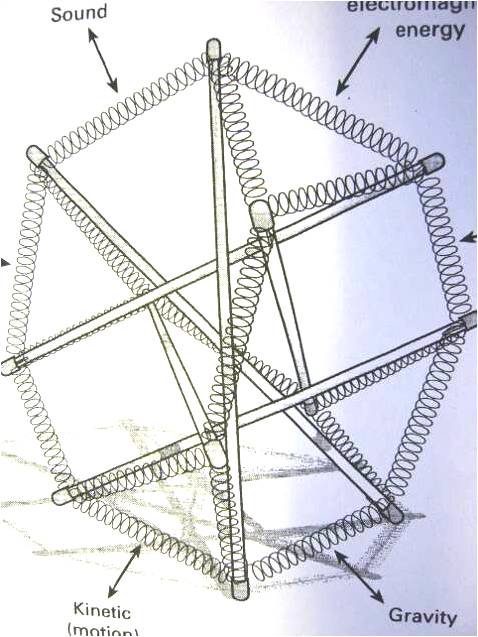Springs
Springs
A spring is an elastic object used to store mechanical energy. Springs are usually made out of hardened steel. Small springs can be wound from pre-hardened stock, while larger ones are made from annealed steel and hardened after fabrication. Some non-ferrous metals are also used including phosphor bronze and titanium for parts requiring corrosion resistance and beryllium copper for springs carrying electrical current (because of its low electrical resistance). The rate of a spring is the change in the force it exerts, divided by the change in deflection of the spring. That is, it is the gradient of the force versus deflection curve. An extension or compression spring has units of force divided by distance, for example lbf/in or N/m. Torsion springs have units of force multiplied by distance divided by angle, such as N·m/rad or ft·lbf/degree. The inverse of spring rate is compliance, that is if a spring has a rate of 10 N/mm, it has a compliance of 0.1 mm/N. The stiffness (or rate) of springs in parallel is additive, as is the compliance of springs in series. Depending on the design and required operating environment, any material can be used to construct a spring, so long the material has the required combination of rigidity and elasticity: technically, a wooden bow is a form of spring.
The Use of Springs as Tension Elements in Tensegrity
Many tensegrity explorers use springs as tension elements.
Springs as a Model for Energy Storage in Biological Tensegrity
Tendons and bone can store large amounts of energy and return it like a spring in leaps and bounds. The best model for visco-elastic behavior of biologic tissues is the non-Hookean spring and dashpot. This models the elastic behavior is natural to most biologic tissue. When such tissue is initially stressed it behaves almost like the surface of a liquid at low and moderate strains. It then rises in its very characteristic, non-Hookean, 'J' response. Mathematically, this is the only sort of elasticity that is completely stable under the fluid pressures at high strains found in blood vessels, alveoli, bladders, bowels, muscles, uteri and most other biologic soft tissues. The properties imparted by this curve are flexible and tough. With this configuration, biologic tissue unlikely to fracture, explode or be prone to aneurysm formation. [1]
Links and References
[1] Textbook of Musculoskeletal Medicine, Hutson, M & Ellis, R (Eds.), Oxford, Oxford University Press. 2006
